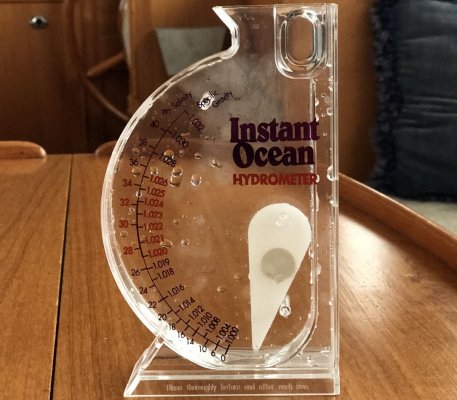Since I have the same model and year boat as the OP and have a dry bilge, let me ask some of leading questions.
Do you have a smallish wet/dry vac aboard? If not get one because they are an invaluable tool in finding leaks through regularly sucking all the water out from behind the engine which is where I am sure you are seeing the water collect. Working from completely dry is the way to find the source through process of elimination.
I found the oft-mentioned hull to deck seam in my boat to be completely sealed by the factor and NOT my source of unknown water. My sources of bilge water were at various times a faulty ac drip pan installation, leaking water seal in the engine raw water cooling pump (twice), a leaking SeaTech hose fitting in the potable water fitting under the galley sink, and un caulked (factory error) emergency bilge pump overboard fitting in the hull well above the waterline until high speed perations put a flow of water across it, a leaking mascerator pump seal, and the four deck fills (fuel/water/waste) after every rain.
When specifically do you find the water in the bilge? After a run? Between runs after sucking all the water out with a wet/dry vac?
Do you run the air conditioner and then find the water? I found the factory ac drip pan drain installation inadequate, with kinked hoses and clogged with algea because no anti-algea chlorine tablets had been put in the pan.
Have you felt around for dampness under the shaft seal (I assume you have a Tides dripless as I do). If you have a leak there, you may be a fresh seal in a plastic case between the seal and the tranny - mine has one).
Feel around under the engine's raw water pump for any water droplets and look in there while underway with a flashlight to see if there is any dripping going on. Been there, twice.
Is the potable water system energized during a period when water collects but nothing else is going on - try it overnight sometime with boat moored on shore power.
Other possibilities as mentioned by others here but not in this post could also be extant,but since we have the same boat, and mine now runs a dry bilge, you might want to pay close attention to my ideas first.
Lots of luck, and I hope you will do us the favor of looping back to us here to fill us in on your success.


